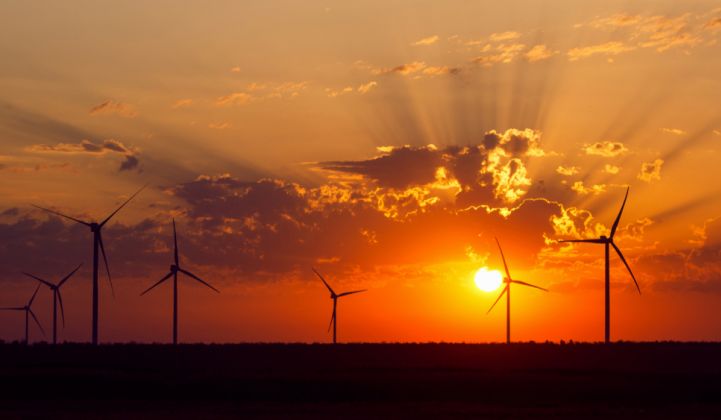Renewable energy developer RES has warned of U.S. wind project supply chain challenges as the federal Production Tax Credit comes to an end in 2020.
“The largest issue that we see on construction for the next two years is the availability of large cranes in the United States,” said Rick Ortiz, RES Americas senior vice president of wind.
RES, which has more than 8 gigawatts of renewable energy projects installed or currently under construction in the U.S., has already moved to secure long-term agreements for cranes that can handle 3-megawatt to 5-megawatt turbines, Ortiz said.
The company is seeing growing lead times for main power transformers, steel and wood T-line poles and reactive power compensation packages for substations, he said.
Lead times will continue to extend as the industry supply chain gets more saturated over the next two years, Ortiz predicted. The race to complete plants before the Production Tax Credit runs out could also be affected by logistical problems, he said.
Trucking capacity for major components, such as turbines and main power transformers, is rapidly getting tied up, he noted. A particular concern is what will happen to projects that require specialist installation equipment, such as wind farms on hilltops and mountain ridges.
“What it’s causing most of us in the industry to do is put deposits down now to tie up pieces of equipment that we might need in 2020,” said Ortiz.
Hitting deadlines and staffing up
Developers are also worried about how wind turbine makers will meet order levels forecast for 2020, when Wood Mackenzie Power & Renewables predicts 12.9 gigawatts of capacity will be installed. About 60 percent of that is due to go into the ground in the fourth quarter of the year.
So far, most manufacturers are optimistic about hitting order dates, said Ortiz. However, he forecast that many manufacturers might seek to change the 12-month delivery period in standard turbine supply agreements as the tax credit's phaseout draws closer.
Finally, RES is expecting an uptick in staffing costs as technical teams get busier. “There’s not enough trained people to build all of the megawatts that are going to be built at the same time,” Ortiz said.
RES is training new people to head off this challenge. And overall, the company is confident it will be able to overcome supply constraints. But Ortiz said companies that have not tied down supply agreements in the next couple of months may face mounting project costs.
“I would guess people that are less experienced and don’t have the financial backing to make some of these upfront commitments now are absolutely going to feel a bit of pain if they can’t get those issues resolved before the end of the second quarter of this year,” Ortiz said.
$2.1 billion at risk
Ortiz’s concerns echo a warning issued in a January report from Wood Mackenzie Power & Renewables.
As previously reported in GTM, as much as $2.1 billion of revenue could be at risk from cancellations and postponements due to supply chain bottlenecks over the next two years.
The potential for problems is being exacerbated by the increasing size of wind turbine components, said the report. For example, the blades due to be installed on new wind turbines in 2020 are generally over 55 meters long.
These require special trailers, experienced drivers and special escorts, as well as taking longer to move around than the similar components that were commonly used a few years ago.
The report’s author, Wood Mackenzie Power & Renewables managing consultant Leila Garcia da Fonseca, said the main players in U.S. wind were aware of upcoming supply chain issues.
Transportation companies are already turning down 2019 and 2020 deals with turbine manufacturers due to a lack of capacity, she said.
To overcome these problems, Garcia da Fonseca said the wind industry should try to shift equipment deliveries to the first two quarters of 2020, alleviating potential bottlenecks later in the year.
Wood Mackenzie Power & Renewables also recommends turbine makers work with rail companies to optimize the use of dedicated railcars. Finally, said Garcia da Fonseca: “[A] Production Tax Credit extension proposal is also an option…although not very likely to happen.”




